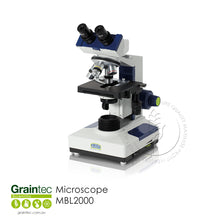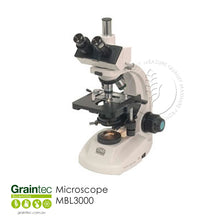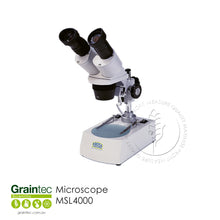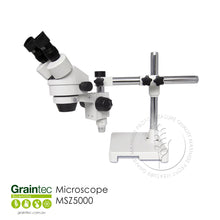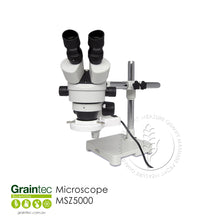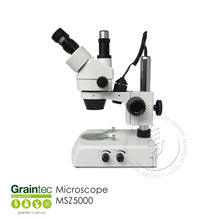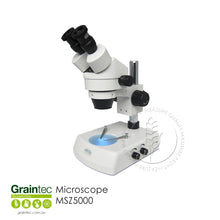
Description
Biological and Stereo Microscopes for any laboratory
Biological Microscopes and Stereo Microscopes for applications in laboratories, industry and education – ranging from low-cost compact models for general usage, to professional expandable devices for more challenging applications. There is also a metallurgical version – ideal for use in the identification and analysis of all types of metal, including steel and alloys.
Accessories include video cameras, photo cameras, image processing and connecting cables.
We offer three ranges of Microscopes for the Biology Laboratory.
The MBL3000 is suitable for advanced examinations and includes optional features for presentations; it also allows for examination of transparent fibres. Planachromatic objective lenses, expandable phase contract setup, darkfield lighting and micrometer ocular pieces are also features of this device.
The MBL3200 is a professional inverse microscope, for identification and analysis of biological substances and cultures, includes mirror reflex and video camera connection via photo and C-mount video adapter. The MBL3300 is the professional metallurgical microscope, for the identification and analysis of steel connections and other metals, suited for laboratories and industrial use (applications such as determining quality, raw material anlaysis and control of metal structures after heat treatment). It has a photo tube for connection to a camera or video camera.
MBL2000 microscopes are a range of robust, standard, multi-purpose binocular/trinoocular microscopes for medical and biological examinations in laboratories and education. This series has a binocular optical head with angled view and eye distance adjustment, with a dioptre compensation scale and allows coarse/fine modes to be set, it also is expandable to phase contrast features, and has graduated XY cross tables with coaxial operation. The compact and cost-effective MML series monocular microscope, is designed for basic educational and laboratory applications, the ideal tool for introducing microscopy. All MML devices are provided with a 45 degree angled ocular head, and a 360 degree rotating optical head, together with a coarse/fine mode and built-in light source.
We offer two models of Stereo Microscopes.
The MSL4000 series is a cost-effective, standard stereo microscope, giving varying magnification options and uses, through versatile accessory options. It includes a 45 degree angled view and eye distance adjustment, with the revolver having a two magnification capability.
The MSZ5000 is a professional stereo microscope, providing a robust zoom which is ideal for the examination of electronics, precision engineering/synthetic/plastic products and medical products in inspection, assembly, analysis, soldering, polishing as well as precision/smooth finishing work. Perfect for quality control applications, it has a large zoom range and excellent depth-focus.
Should I choose a mono, bino, or stereo microscope?
One of the basic decisions to be made when considering a new microscope is the configuration – a simple monocular instrument, the more user-friendly binocular configuration, or the 3D viewing afforded by the stereo microscope.
The monocular microscope is the simplest and least expensive arrangement, but still has an important role in the laboratory as well as in education and training. A single objective lens – selectable from three or four in the turret or nosepiece in all but the most basic instruments – and a single eyepiece or ocular lens provides a magnified image of the sample.
Above these entry-level instruments are the binocular microscopes. Here the photons from the image are still collected by a single objective lens, but the image is then split and sent to a pair of eyepieces. The primary advantage with this type of instrument is that the operator works in a more natural posture, using both eyes, and this greatly reduces fatigue. Less tired operators have higher productivity and produce work of better quality, making the binocular microscope the mainstay of many modern laboratories.
For some tasks, though, the 3D view afforded by the stereo microscope is needed. In a stereo microscope (sometimes called a dissecting microscope), twin objective lenses see the sample from slightly different positions, delivering an independent image to each of the operator’s eyes in order to create a sharp image with true depth perception.






